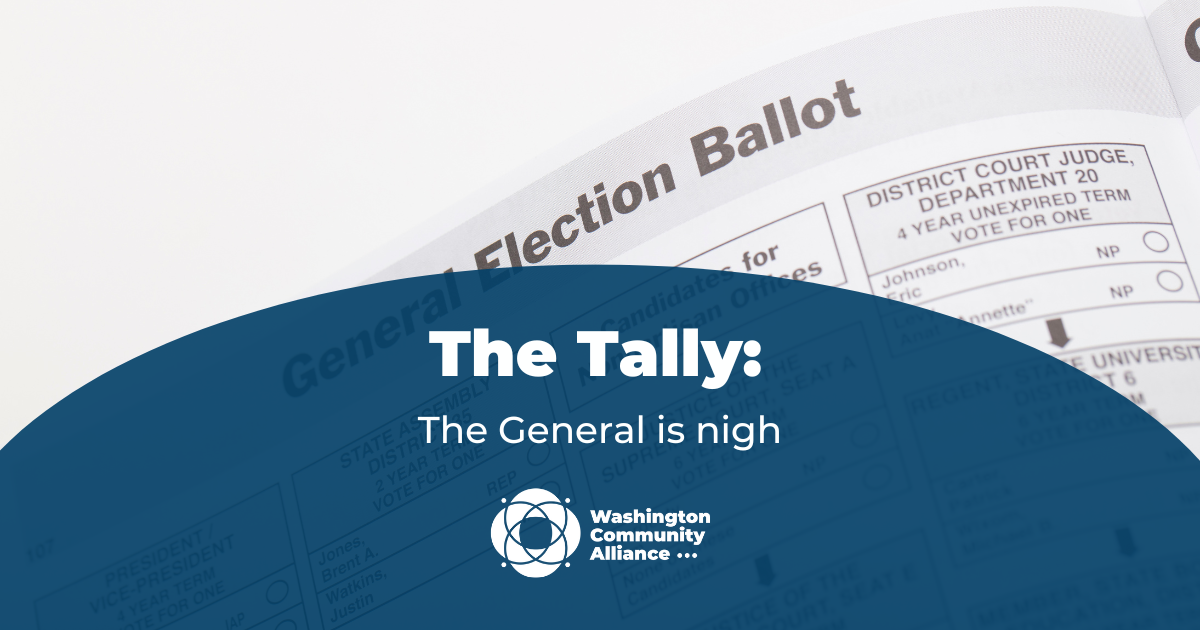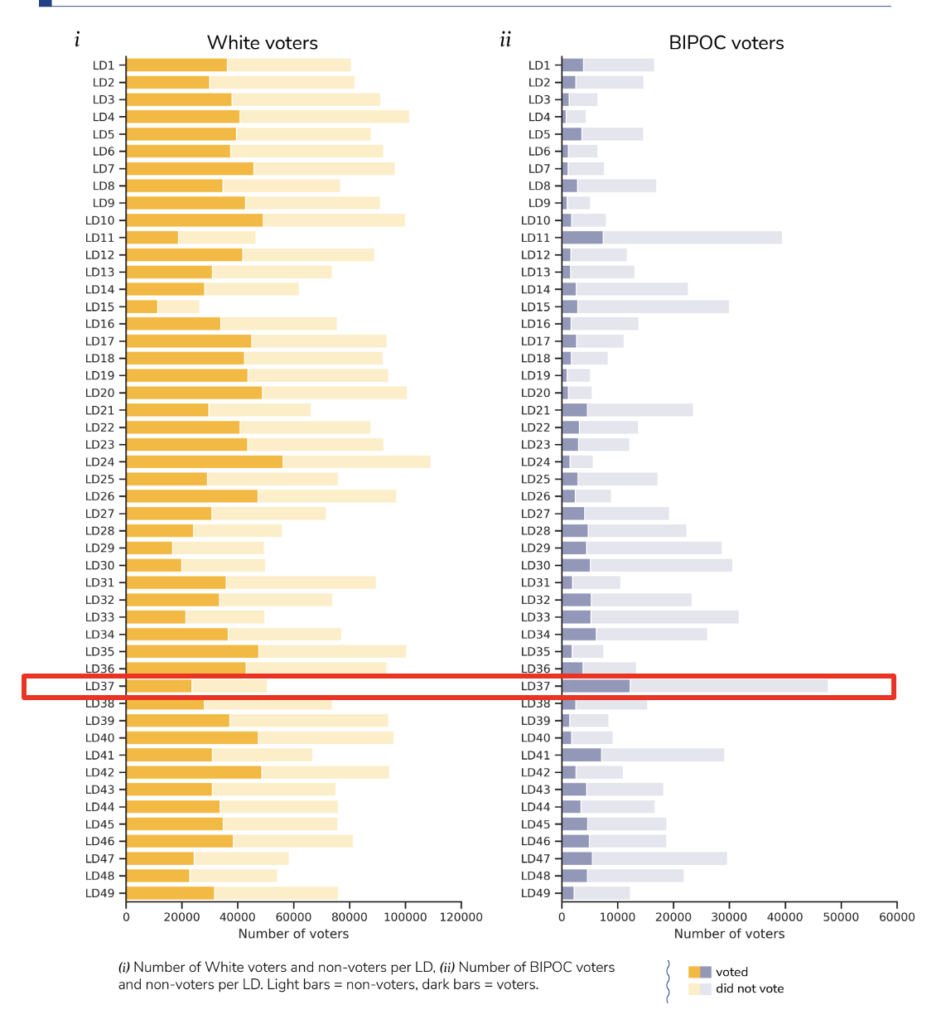
Friends — First, some exciting news: WCA has two new staff members!

Alma, WIRF Program Coordinator
Alma Aguilar (she/her) joins our team after previously working as a legal assistant, helping clients navigate the U.S. immigration system at Moss Immigration Law. Before that she worked at Family Impact Network as a DSHS contract compliance specialist. She grew up in Toppenish, a farm working community outside of Yakima, and moved to Spokane where she earned her Bachelor’s in Sociology at Whitworth University. Fun tidbit: she spoke at Spokane’s First Annual Women’s March in 2017 with thousands in attendance. Alma loves her family, a good carne asada, and sunshine. To decompress, she enjoys exploring new cities, walking trails, and restaurants.
Rediet, Washington for Black Lives Statewide Coordinator
Rediet is a lifelong Washingtonian and daughter of Ethiopian immigrants. She has called many parts of the state home, including South King, Pierce, and Spokane county. Over the past several years, Rediet has worked in educational settings, mentoring and advocating for Black, Indigenous, communities of color, and international students and teaching about Black American culture abroad in France. Her appointment to Washington for Black Lives brings together her graduate work, computer programming experience, multicultural lens, and her lived experiences as a Black woman native to Washington State. She holds undergraduate degrees in Mathematics and French and a graduate degree in Theology from Whitworth University.
🗳 Now, Let’s Talk Election Efforts
To understand the 2022 midterm General Election here are four key take-aways from the Primary:
1️⃣ Dem majorities are safe!
2️⃣ Dobbs (the abortion case) doesn’t mean a blue wave
3️⃣ Turnout was lower than usual
4️⃣ Voters of color are tilting right
Everyone before the primaries was fa-reaking out because the GOP riled up their base yet again. The media and an upsettingly large portion of Democratic consultants fell for it. The prophesied “red wave” fell short. Instead, we’re going into the General with Democratic majorities most likely staying put.
Because our state doesn’t ask for racial demographics when people register to vote, many organizations don’t have very good data for reaching out to voters of color. These voters get less outreach from campaigns and civic groups and their lower turnout becomes an excuse for investing less resources in turning them out. The data we do have at the precinct and legislative district levels show that turnout was lowest in majority-minority districts. In fact, the 37th LD, the legislative district with the most Black & Brown voters, had the lowest turnout of any legislative district. What a self-fulfilling prophecy.

Just as concerning is that voter turnout in the primary was lower than expected among progressives. In 2021, WCA Action Fund developed a voter score that identifies voters with a record of supporting racial and economic justice, as well as a record of voting in primaries. And we found just half of these voters turned out in this years’ Primary. In one of the most progressive districts in the state—the 43rd LD in Seattle’s Capitol Hill—an outright majority sat out. This might not worry the incumbent legislators in those districts, but it does lower the margins for Democrats running statewide.
Meanwhile, on the other side, the top 40% of the most conservative voters had nearly 90% turnout. The good news, however, is that getting record turnout among their base still led to them losing ground in a year favorable for Republicans, suggesting Republicans have hit their base-building ceiling here in Washington State, and they can’t convince new voters to join them. But it also means, we’ve identified a GIANT gap where many voters aren’t getting any contact AT ALL.
Ok, who is our base?
While most plans tend to be just “we want to talk to people who we know will vote,” ours is “we want to talk to voters who we know would vote for us.” Those aren’t the same thing, and only sometimes overlap. The fact of the matter is, a lot of Democrats and progressives aren’t even talking to people who already agree with us, much less talking to people we can persuade to grow our movement and base.
The base of the Democratic Party is increasingly more college educated, and these voters are turning out at higher rates in Primary Election. However, it balances out by the General Election where results tend to shift 1-2 percentage points to the right. Unsurprisingly, this trend is most true in the most educated, whitest parts of our state and less true in working class, racially diverse legislative districts.
Where there are infrequent voters of color, that shift right is even more exaggerated. There’s no single reason that explains this trend, but we know that the baseline culture is fairly conservative, which is maybe even more true for immigrants and communities of color. So the self-fulling prophecy of progressives not contacting infrequent voters leads to infrequent voters behaving like conservatives when they do participate in the democratic process at all.
There’s a lot of chatter about young people being more leftist. And it’s true, however, only 18-19 year-olds can be relied on to turnout in higher numbers. After that, engagement dips significantly around the time they leave their parent’s house.
So how do we reach them?
Well, first thing’s first: Relational organizing is the most effective tactic—but it doesn’t scale. Below you’ll see a graph of midterm turnout effects (in percentages) by type. The dot is and the number is the average per cluster of type. The bars with brackets on each end are the level of variance with that effect percentage.

The cluster of gray in the graph above means a lot of people are doing that form of contact to voters. You can see the next two most effective forms of contact after relational organizing are pledge cards and social pressure mail—both of which could be argued are a form of relational organizing. These tactics are only effective when they come from a trusted organization that has a mission beyond simply electing candidates of a particular party.
Ultimately, we need more relational organizing with voters of color who—in the absence of any contact from progressives—will skew conservative. And we must ensure that young people leaving their parent’s homes are engaged AND have a candidate to rally behind.
What do you think? Have any questions? Tweet us your thoughts @WACommAlliance.
Keep up on the action and opportunities to get involved through our legislative newsletter, The Tally.




